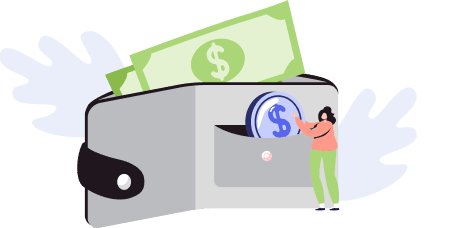
The formulas mostly find application in business and financial dealings. Profit and loss as a percentage is usually a measure to illustrate how much profit or loss a trader incurred from any deal. The cost price and selling price of the goods must be known in order to compute profit and loss.

Profit and Loss Formula
- Conversely, a loss indicates a financial deficit where expenses exceed revenue.
- If you don’t receive the email, be sure to check your spam folder before requesting the files again.
- In particular, the P&L statement shows the operating performance of the company as well as the costs and expenses that impact its profit margins.
- The salesperson sells the goods for a higher but reasonable price to make money.
- 5) A student buys 10 notebooks for Rs. 500 and sells them at a 10% loss.
- There is a selling price and a cost price for every product.
Profit and Loss formula is used in mathematics to determine the price of a commodity in the market and understand how profitable a business is. Based on the values of these prices, we can calculate the profit gained or the loss incurred for a particular product. The important terms covered here are cost price, fixed, variable and semi-variable cost, selling price, marked price, list price, margin, etc.

Marked Price Formula (MP)
When the cost price of the transaction is more than the selling price, the loss formula is applied. When the selling price in a transaction exceeds the cost price, the profit formula is applied. Let us substitute the given to the equation to calculate the profit or gain.
- Profit percentage (%) represents the amount of profit as a percentage of the total.
- This is especially true when a business’s operational activities alone are the only source of the loss.
- Based on the values of these prices, we may compute the profit or loss for a certain product.
- In certain cases, profit or loss is calculated as a percentage of the cost price.
- In Profit and Loss, the most basic concepts are the prices of various items throughout the cycle of their purchase and sale.
- If the shopkeeper sold the television set for \$652, find the profit or loss.
- Businesses might also have non-operating revenue from activities like interest on investments or gains from selling assets.
Loss Percentage

Get instant access to video lessons taught by experienced investment bankers. Learn financial statement modeling, DCF, M&A, LBO, Comps and Excel shortcuts. Together, alongside the cash flow statement (CFS) and balance sheet (B/S), the P&L statement provides a detailed depiction of the financial state of a company.
Polynomial Identities Math Activities
A product is said to have made a profit when its selling price exceeds its cost price. In other words, a product is said to have made a profit if it is sold for more than it costs to purchase. Now let us understand the basic concepts involved in the formula of profit and loss. Here we will discuss all formula of profit and loss in detail normal balance with numerical examples.
When the selling price is more than the cost price, the profit is the difference between the two. But a loss is considered to have happened when the cost price exceeds the selling price. Solved examples on profit and Loss and FAQs help in quickly revising the concept. Profit and loss formulas are used to compute profit or loss what is the equation used to calculate profit and loss? that has been achieved by selling a specific article.
This measure reflects the actual amount a business has earned after accounting for all costs. A positive net profit indicates a healthy financial state, showing that the business generates more income than it spends across all operations. Investors and creditors pay close attention when there is a loss for an accounting period since it may indicate that a company’s creditworthiness has declined.
This is the price at which the product will be offered for sale. However, there may be a discount applied to this price, and the product’s actual sale price may be lower than the marked price. The selling price is the price at which a shopkeeper sells a product or service to a consumer. The cost price is the price at which a Accounts Receivable Outsourcing merchant or retailer buys or has bought goods. Actual cost, last cost, average cost, and net realisable value are all forms of cost prices.
Leave a Reply